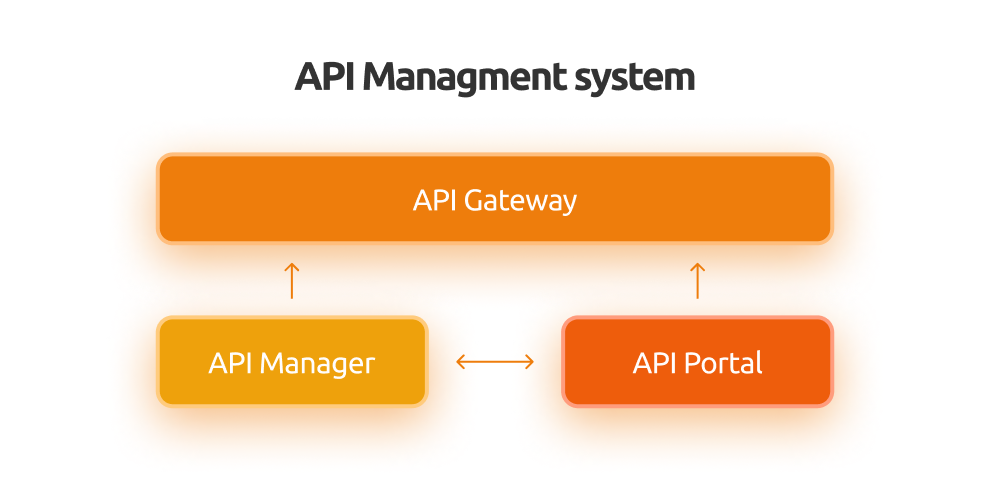
API Management as a lever for digital economy
API management is becoming increasingly important in modern software architectures. Organisations today seldom lack of a roadmap with the implementation of a system for the adoption of its strategies in the field of APIs, especially to cover and extend its intellectual property, and even as a source of revenue. It is by no means a new invention, as they have been with us for a long time. However, is true that in recent years their use is becoming universal to the point of becoming crutial elements of the digital transformation of companies.
What is an API and what is it for?
An API is used to allow two computer programs to communicate or interact with each other. It is a set of predefined routines and subroutines, functions, data types and protocols that provide secure and reliable access to an application, operating system services, software libraries or other systems.
Two applications connected by an API leverage each other’s information without compromising their own independence and security. In some cases, especially in web services, an API is only a specification for remote users to consume services. In general, APIs make it possible to interconnect modules and applications, facilitating access to their backends and allowing the reuse of services.
Normally, each API is accompanied by a user manual with documentation indicating the specifications defining how the exchange of information is carried out, rules for the proper use of the API and various tutorials on its capabilities.
APIs make developers’ work easier, whether they create or consume them. It allows us to implement procedures without having to program them again, which in programming terms is called an abstraction layer.
A robust and strong API strategy
Nowadays, everyone has mobile devices, makes massive use of social networks and shops online. In addition, the emergence of technology startups, the growth of platforms in various sectors (retail, financial, insurance…) and the boost of new trends such as the Cloud, IoT or Big Data have led to the rediscovery of APIs, not as mere connectors, but as powerful levers for the digital transformation of companies and organisations.
Why are APIs so important?
- Enable us to innovate from within companies by adding value to IT assets.
- We reduce the time-to-market in the delivery of products and services.
- We optimise resources and reduce costs and risks
- We promote new business models: api hub, api market, monetisation…
- Personalisation of services by incorporating Artificial Intelligence.
- We establish new alliances and collaboration models, new and modern businesses.
- We use the API-First paradigm to guide the digital transformation and cultural change of the company to start working on digital products.
- Improve customer experience from any current or upcoming channel (omni-channel)
- Automate processes and implement more effective solutions, better management of IT resources
- Facilitate the migration of systems to the cloud
- Rapidly modernise outdated architectures
- We naturally improve continuously. Leverage performance metrics and data analytics to implement improvements
- Improve talent attraction and retention by managing the latest trends in enterprise application development.
API Management
APIs have been growing exponentially, which requires an orderly use of APIs. API management comprises a set of technologies and procedures to control the publication, documentation, promotion, integration and monitoring of APIs in a secure and scalable environment.
Given the large number of APIs that exist, the ease of construction and consumption and the fast-paced digital environment in which we find ourselves, API management is an essential procedure to avoid problems such as service degradation, lack of usage control or security breaches.
Correct API management allows us to control its development, monitor the use that third parties make of our API, establish access permissions, design monetisation mechanisms, guarantee security, etc.
API management solutions include at least 3 closely related elements:

- API Gateway or API Exchanger: its main function is to enable the connection between services and consumers. It is the gateway that channels communications to the published APIs, guaranteeing security and managing the flow of communication between different APIs and processes. It includes routing and usage policies. It is the part that allows traffic monitoring and usage analysis.
- API Manager: it is in charge of offering providers high configuration, editing and publication capabilities for their APIs in the API Gateway component. It also manages the lifecycle, as well as usage and security policies.
- API Portal or Development Portal: it is dedicated to collecting all the necessary information for consumers about the APIs published in the API Gateway. It includes the documentation repository, API search engine and catalogue, shortcuts, testing systems and statistics.
For each case we will have to study its pros and cons. It is also essential being very a correct selection of an API Manager and study the purpose in detail so that the decision adapts to the requirements of each organisation.
In short, we will deal with API management with a single and consolidated vision of the company, having a Control Plane where all the management and actions to be carried out to design and execute the apification strategy are centralised, as well as for the governance of all the APIs regardless of whether they have been implemented as microservices, monoliths or even third-party PaaS or SaaS products.

